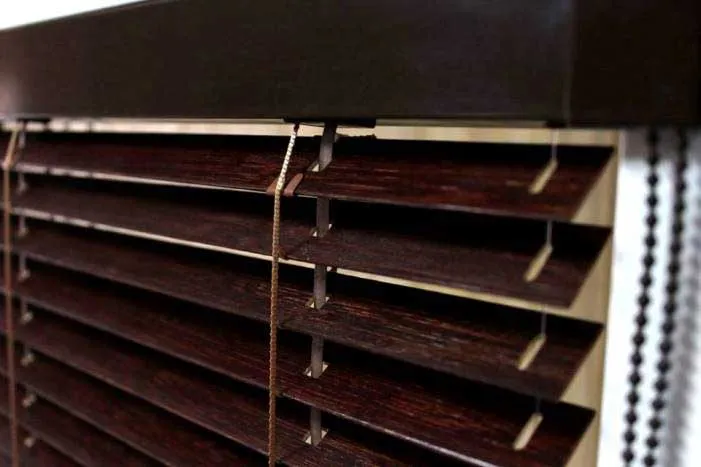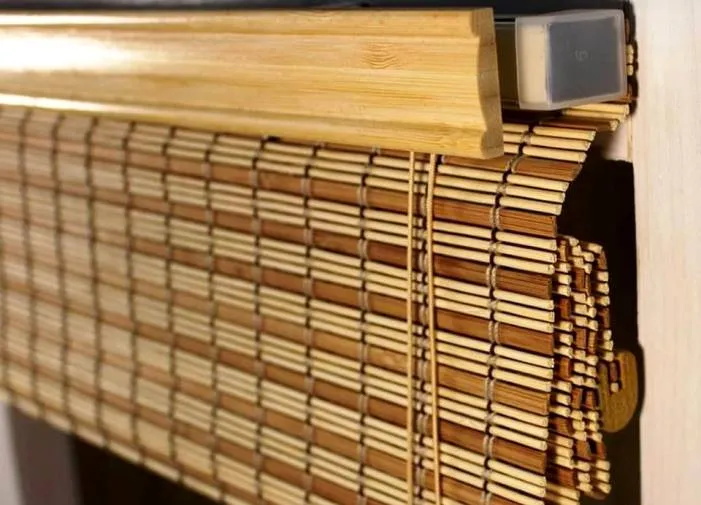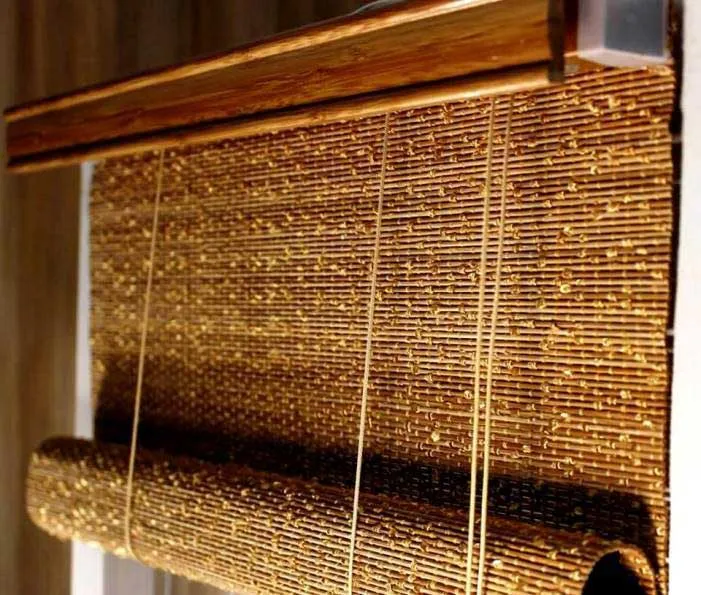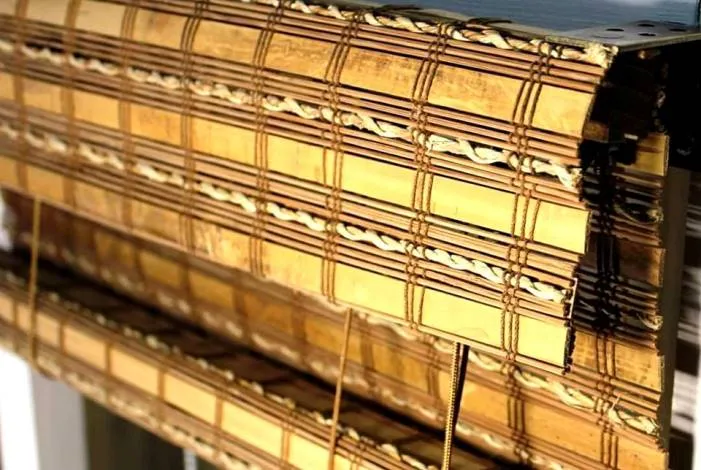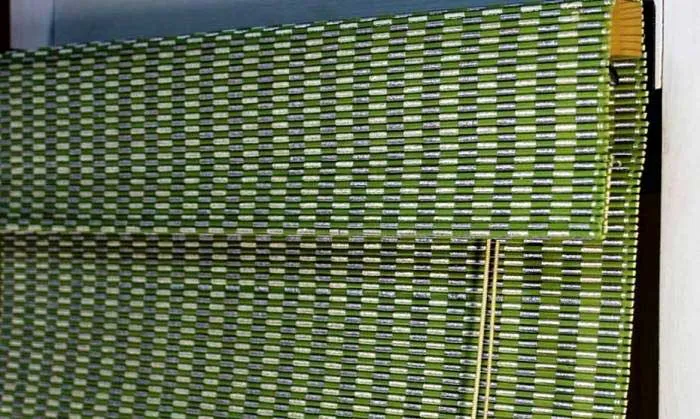Roller blinds have firmly taken their place among sun protection systems in modern interiors, gradually replacing curtains and drapes. Fabric roller blinds can both perform the function of sun protection without attracting much attention to themselves, or become the highlight of the interior when choosing bright fabrics. But not so long ago, a new system appeared among roller blinds - day-night; such curtains completely replicate the functionality of roller blinds, and also have additional capabilities for adjusting sun protection.
What are the differences between day and night roller blinds?
The operating principle of classic roller blinds consists of a solid fabric, which is wound onto a special mechanism using a chain control. Using a chain, the fabric is installed at the required height and covers the window opening from the sun's rays. There are several nuances in this design: if it is necessary to increase the amount of light, for example, in the evening, the curtain must be opened, which means opening the window to prying eyes.
Day-night has several fundamental differences compared to roller blinds. During the day and night, the fabric is also wound on a special shaft, but the fabric itself is located in two layers and consists of dark fabric stripes and transparent tulle, which alternate. In this arrangement, the curtain allows you to set the day and night positions. In the day position, the stripes alternate, letting a large amount of light into the room; dark and light stripes alternate, while the light stripes consist of transparent tulle, which means they let in light, but cover the window from prying eyes. In the night position, dark fabric stripes on two layers of fabric go one after another and completely cover the light opening with fabric; in this day-night position they resemble roller blinds, they tightly block the flow of sunlight. In this case, the curtain, like a roller blind, can be completely raised, freeing up the light opening.
It turns out that day-night curtains combine the functions of horizontal blinds and roller blinds and at the same time allow you to select incredible design solutions thanks to their non-standard appearance, as well as a large selection of fabrics.
Types of zebra curtains
Day-night curtains are always made of special striped fabrics, but the fabrics differ not only in color, but also in texture, level of light transmission and functional features.
The day-night system has design features compared to roller blinds because it consists of two layers of fabric, which means that in order to completely wind the curtain onto the shaft, you will need to wind both layers, which means twice as much fabric.
Day-night curtain systems are divided into several types.
Open - each curtain is mounted on a separate leaf.
Closed - Curtains, as in the open type, are mounted on the sashes, but the cornice is closed with an aluminum box and is additionally equipped with aluminum guides, which are mounted vertically on glazing beads.
Reinforced systems for installation on a wall, ceiling or large panoramic windows.
All types of systems are installed without special skills and special equipment. The system is supplied assembled and to fix it, just secure the cornice with four screws and that will be enough. In the case of closed systems, special guides are glued to the box, which is also done without much difficulty. Installation of day-night systems is possible in various planes, on the sash. On the opening, inside the opening or on the ceiling. Systems for walls and ceilings are often used in an open type because they can be easily deployed and the curtain will remain fully functional.
Pros and cons of systems
Contrary to general opinion, day-night systems are not much more expensive than roller blinds, even taking into account the use of more fabric, such systems are quite budget-friendly for use in any interior. The cost of the product is calculated from the required size of the structure, system and fabric, so if you need to change the cost, just try to choose other systems or fabrics and the price of day-night curtains will change significantly.
The main advantage of day-night curtains is the ability to increase the lighting in the room without raising the curtain completely. By setting the fabric to the day position, you will receive the maximum amount of light while remaining closed from prying eyes.
Curtain care
During production, day-night fabrics are coated with special dust-repellent antistatic impregnations, so they do not accumulate dust and are easy to clean. To clean the system, just shake off the dust or wipe the cloth with a damp sponge and that will be enough. Contrary to general opinion, although the curtains are fabric, they do not tolerate full washing; the fabric wrinkles easily and becomes unusable during intensive washing. If there is serious contamination, the curtain can be wiped with a sponge soaked in a mild soap solution, and then rinsed with clean water. When using strong products, they can damage the structure of the fabric or the paint on it.
Before placing an order for day-night curtains, you should determine the installation location of the curtains and take measurements. All products are made to individual sizes, so in order for the curtains to fit perfectly on your windows, you must first replace all the windows. Just like curtains, windows are made individually relative to window openings, so a “regular” window in different rooms differs in size.
Day-night curtains in the interior
There are a great variety of day-night systems and each of them has its own characteristics relative to the other. Regarding design, day-night curtains look great both on small windows and on facade glazing or many individual sashes. One example is curtains for a balcony; often each individual shutter is closed with its own product, which allows you to adjust the light flux depending on the time of day and either completely close yourself off from sunlight, or open part of the shutters to get enough light during the daytime. Advice: do not cover the balcony with fabrics with a high level of darkening or blackout with 100% darkening. Behind the balcony there is often a room that requires a large amount of sunlight, and if you close the balcony from the sun, the room will be in twilight, which is why we recommend taking the lightest possible curtains for the balcony windows, for example, white fabrics or light day-night ones, which allows open all the curtains in the day position and get sufficient lighting, and in the night mode, close yourself from prying eyes with the help of curtains. In addition to choosing systems, do not hesitate to combine different colors of fabrics on different windows; with such combinations, a unique effect is achieved that will add variety to your interior and it will not seem too strict.
Materials for day-night curtains
The main material is 100% polyester, most of the fabrics are made from it. Such fabrics have different levels of light transmission and allow you to choose a fabric from 30 to 60% darkening. Often fabrics, even in a completely closed position, do not have a complete blackout; for this purpose, special blackout series are used.
Blackout fabrics are also made of polyester, while they are on a rubberized base, and the rubber does not allow sunlight to pass through, thereby achieving a 100% blackout effect. Blackout fabrics perform especially well in children's rooms, where it is necessary to provide the child with a restful daytime sleep, or office spaces with projectors and even cinemas to ensure complete darkness.
There are also special series with reflective coating; they transmit light but reflect heat, which significantly reduces the heating of the room in the summer.
When installing day-night curtains there are some controversial tips that are often recommended, but not all of them are practical enough, we will look at a few of them to explain the situation to you and protect you from such decisions.
Attaching the curtains - there are options with and without drilling, but in the case of installation without drilling, you will have two options to choose from, special clips that cling to the opening flap and hold the system - the clip presses the sealing rubber and does not allow the flap to close tightly, which ultimately leads to to drafts, as well as when ordering two curtains at once, for example, for a fixed and an opening window, the opening one will have a clip with a hook, and on the blind one there is no way to catch because the sash does not open and therefore either fastening with drilling or fastening on scotch. Let's consider the option of fastening with tape - there are several dangerous moments here: when opening and closing the curtains, you need to pull the chain mechanism, which transmits your force to the mechanism and rotates the shaft with the fabric, but this force is also transmitted to the brackets. As a result, the curtain receives loads in the form of fabric weight + system weight + force for opening the curtain and all this is held on by adhesive tape. Also, do not forget that in the summer the curtain is in direct sunlight and gets quite hot, and the heated glue loses its fastening properties, so in the summer the curtain can be accidentally torn off from the window.
The bottom line is that for safe fastening you should only use the drilling option, because any other method will either highlight the curtain aesthetically or is not safe enough. Undoubtedly, all options have a place and find their buyer, we give recommendations, and the decision always remains with the client.
Recommendations for choosing curtains in the interior
Day-night roller blinds look great in any interior, thanks to a wide range of fabrics and systems. You can always choose a system that will match the color of your window frame, especially a wide range in closed systems; fittings are available in white, brown, golden oak, walnut, mahogany. These are popular colors for laminating metal-plastic windows; accordingly, the fittings will be similar in color to the window frame. There are some prejudices that roller blinds and day-night are options for decorating offices, but for example, they will not be suitable for a private home due to the difference in styles. Here everything depends on the interior of a private house and the right fabric; in this combination, even a classic interior with a predominance of wood and floral motifs can be diversified with the help of curtains with patterns. Such curtains will not stand out and appear strict thanks to fabrics with floral motifs or textures.
Despite the wide variety of classic curtains, many prefer day-night systems or other more compact types of sun protection; such systems allow you to leave the window sill free but at the same time 100% perform the necessary functions. namely, adjusting the lighting in the room. Also, day-night systems can be easily combined with curtains and other types of classic curtains, thereby expanding the functionality of the products, for example, curtains are used during the daytime for partial darkening, and roller blinds are lowered if necessary to 100% darken the room. Or use day-night curtains during the daytime for comfortable lighting, and use curtains as an element of room decor.
Popular colors of day-night curtains
The palette of day-night roller blinds includes many fabric variations, which differ not only in color, but also in texture, as well as patterns. The designs can be either floral or geometric designs. The color of the selected fabric depends on the color of the interior. In addition to single-color options, combinations of different colors look good, especially if several products are mounted side by side, and they complement each other, creating interesting color patterns. In the classic style, day-night curtains in beige or pastel colors are often used because this is one of the popular interior color options. It is the beige color that predominates in fabrics and can be from several shades to a whole series only in beige and pastel colors. This solution is not only functional, but also quite thoughtful, because bright multi-colored curtains are quite a bold choice and not everyone likes them. For example, bright red, orange or black curtains in certain interiors with the right accents on the furniture can be an ideal decoration, but often they are too bright for the calm tones of residential apartments and are too distracting in office spaces, which is why bright colors are present for choice, but are not used as often as their quieter options.
Standart systems - what are they and why are they needed?
Often, day-night curtains, like roller systems, are used for installation on separate shutters because this is a compact solution that allows you to precisely regulate the lighting in the room, for example, one shutter is completely closed, and the second partially lets in sunlight. But there are situations when you simply cannot do without one large curtain, for example, a window in an office or shopping center, a curtain for zoning a space or in a cinema, do not forget about panoramic glazing which can be up to 2 or 3 meters in width or height . And therefore, the larger the product, the greater the weight of the entire structure, therefore, for oversized curtains, special Standart 25 or 35 systems are used. Such systems are equipped with reinforced metal brackets and an enlarged shaft on which the fabric is fixed. Standard systems allow you to mount curtains of large sizes, and also withstand the weight of any fabric presented on our website, this is especially true for screen series fabrics, this is a special type of fabric with selectable permeability, this fabric is translucent when viewed from the inside of the room, but nothing is visible from the outside, It consists of polyester and PVC fibers due to which the fabric has a large weight; such fabrics are often used on panoramic windows of gas stations and shopping centers, as well as in stores.
To zone the space, a curtain rod is mounted in the ceiling and when the curtains are lowered, it creates a false wall, which allows you to visually divide a large space into several comfortable seating areas.
